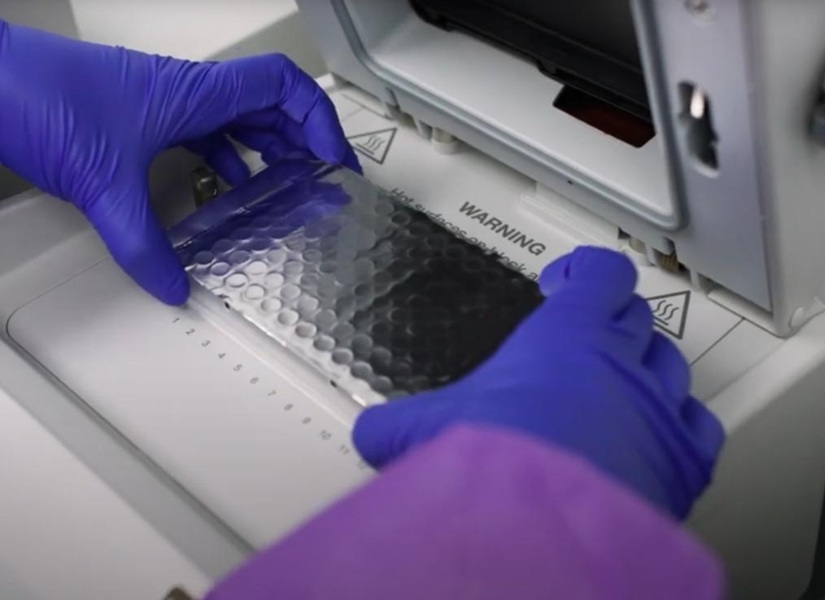Low-Cost Blood Test Enables Early Alzheimer’s Detection
Posted on 16 May 2025
Scientists have identified several reliable blood-based biomarkers for Alzheimer’s disease. These proteins, including amyloid and tau, accumulate in the brain and blood as the disease progresses. A blood test detecting these proteins can help identify the disease at its earliest stages, which is crucial as treatment may prevent or delay cognitive decline. While some tests are available, they tend to be costly, require specialized equipment, and typically only detect a limited number of biomarkers at once. Now, researchers have developed a new blood test that can detect early signs of Alzheimer’s by measuring proteins associated with the condition. This test simultaneously identifies five key Alzheimer’s biomarkers, surpassing existing blood tests, and uses equipment that is widely available in many laboratories.
The test, developed by researchers from the Keck School of Medicine of USC (Los Angeles, CA, USA), is called the Penta-Plex Alzheimer’s Disease Capture Sandwich Immunoassay (5ADCSI). It utilizes xMAP® technology, a widely available system from biotechnology company Luminex (Austin, TX, USA). To create the 5ADCSI test, the researchers selected five biomarkers known to accumulate in Alzheimer’s disease: two forms of amyloid (Aβ40 and Aβ42), phosphorylated tau, neurofilament light chain (NfL), and glial fibrillary acidic protein (GFAP). The team developed a custom test that detects the presence of these biomarkers in blood samples using the xMAP® system. This technology uses tiny color-coded beads coated with antibodies specific to the biomarkers. When a blood sample is added, the biomarkers bind to the beads. Powerful imaging sensors then detect the color emitted by the beads to measure the biomarkers.

After developing the test, the researchers applied it to measure Alzheimer’s-associated biomarkers in 63 blood samples from three groups: 11 patients with Alzheimer’s disease, 17 patients with mild cognitive impairment (a precursor to Alzheimer’s), and 35 healthy individuals. The 5ADCSI test detected the highest levels of biomarkers in patients with Alzheimer’s disease, followed by those with mild cognitive impairment. A specific biomarker, p217Tau, showed a particularly strong correlation with the disease. The researchers also tested the same biomarkers in cerebrospinal fluid (CSF), which generally contains higher levels of Alzheimer’s-related proteins but is more difficult and costly to collect. They found moderate to strong correlations between the blood and CSF results, indicating that the blood test is sensitive enough for early detection of these proteins.
Originally developed as a research solution to a practical issue, the 5ADCSI test aims to offer a low-cost option for widespread Alzheimer’s screening. This could make it possible for annual screenings, similar to cholesterol and blood sugar tests, to detect patients who may benefit from medications or lifestyle changes, such as increased exercise, to slow or prevent Alzheimer’s. The team is now working on commercializing the technology and validating its effectiveness in clinical settings. Following the proof-of-concept study, published in the Journal of Alzheimer’s Disease, the researchers plan to test the accuracy of 5ADCSI with hundreds of patients at different stages of Alzheimer’s. The team envisions broad usage of the test, especially since it relies on affordable, widely available technology, even outside the U.S. Their long-term goal is to integrate 5ADCSI with genetic testing for the APOE4 gene variant, which is linked to Alzheimer’s disease, to offer individuals personalized insights into their risk for the condition.
“The biggest advantage is that our test is very cost-effective compared to other existing technologies, and it’s relatively easy to implement because many laboratories in universities, hospitals, and clinics are already using this technology,” said Ebrahim Zandi, PhD, associate professor of molecular microbiology and immunology at the Keck School of Medicine, who led the research. “In the 10 to 20 years Alzheimer’s takes to develop, proteins such as amyloid and tau are slowly building up. If we have an affordable blood test that detects those proteins early on, we can start interventions long before symptoms begin.”














